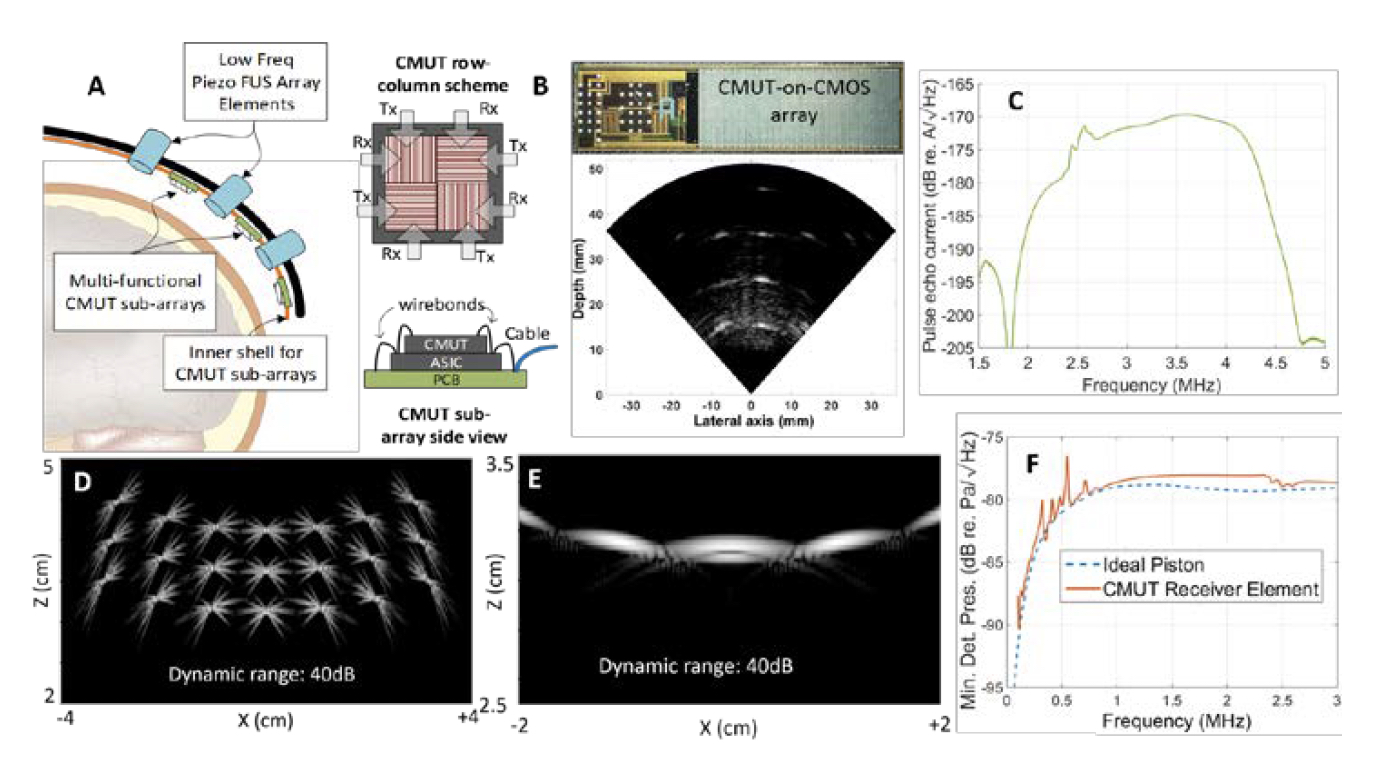Inventors at Georgia Tech have developed several methods for guiding focused ultrasound (FUS)-based medical therapies using capacitive micromachined ultrasonic transducers (CMUTs) to transmit and receive broadband signals inside a FUS system. Adaptable CMUT arrays with integrated electronics offer high sensitivity, wide bandwidth, and improved imaging capabilities for detecting microbubble activity in areas of interest. They are ideal for planning FUS-based treatments, monitoring their safety and efficacy, and adjusting therapies as needed.
Georgia Tech’s methods enable large bandwidths (0.1 to 10 MHz) using a CMUT with a single lateral size or by forming CMUT arrays that combine multiple membrane sizes, with each one covering a specific frequency band. In the arrayed approach, signals coming from each membrane are combined into one signal, either as a single element or as multiple CMUT elements processed with phase delays. Miniaturized, integrated electronics provided in this silicon-based technology offers the capability to build subarrays with element spacing while still keeping the number of cables to a manageable size.
- Robust: Provides sensitivity of detection down to a single microbubble for FUS-induced microbubble activity
- Precise: Offers broadband B-mode imaging capabilities to improve workflow and efficacy of FUS-based therapies
- Scalable: Enables the formation of large CMUT arrays and subarrays with appropriate element spacing
- Streamlined: Features low-noise integrated electronics and a manageable number of cables, even with high quantities of subarrays
The CMUT-based methods are applicable to many FUS-based therapy applications, including:
- Drug delivery
- Fractionation of tissue
- Lysing of blood clots
- Amplifying circulating biomarkers
- Removal of amyloid plaque
- Neuromodulation
FUS is a rapidly growing market for non-invasive treatment of many diseases and can often be used as a replacement for surgery. Applications such as drug delivery, eradication of blood clots, and others focus on a wide range of targets, including the brain, liver, prostate, and vasculature. The widespread benefits of FUS, however, are dependent on ensuring its safety and efficacy.
Of primary interest is the generation of microbubble oscillations—an important mechanical effect of FUS application. Localized microbubble activity offers the ability to noninvasively focus mechanical energy at the cellular level for treatment purposes. On the flip side, microbubbles can also be generated unintentionally at undesired locations, becoming trapped in tissues or causing focusing errors, thereby putting safety at risk. Addressing this risk requires spatial and temporal assessment and quantification of mechanical and thermal effects, ideally using methods that are fast enough for real-time feedback control.
Georgia Tech’s CMUT-based methods offer a solution with single-microbubble-level sensitivity and wide bandwidth. It can be used to detect weak microbubble acoustic emissions through the skull and across frequencies of interest, ranging from 100 kHz or lower for subharmonics to tens of MHz harmonics and all frequencies in between for broadband emission detection. Moreover, its superior imaging capabilities not only can improve safety but may also help improve FUS workflow protocols and efficacy.

Georgia Tech’s multi-functional CMUT subarrays provide the required imaging resolution and noise performance for imaging arrays and single-element receivers, respectively.
